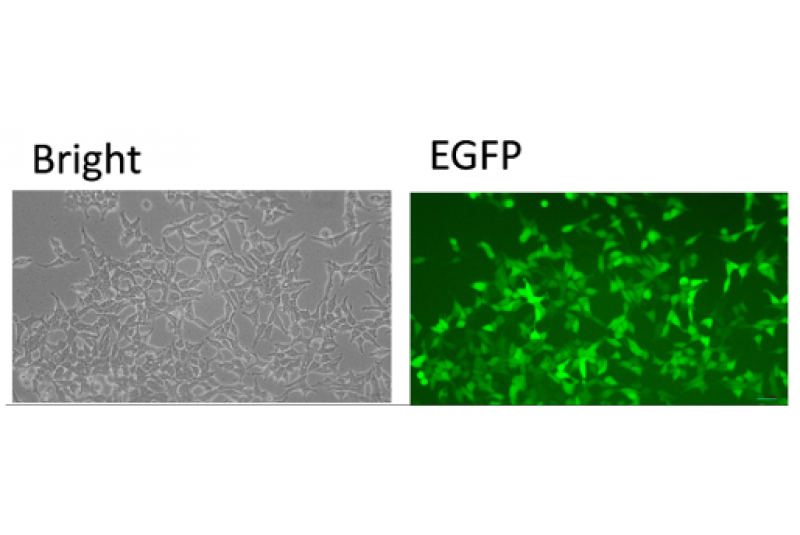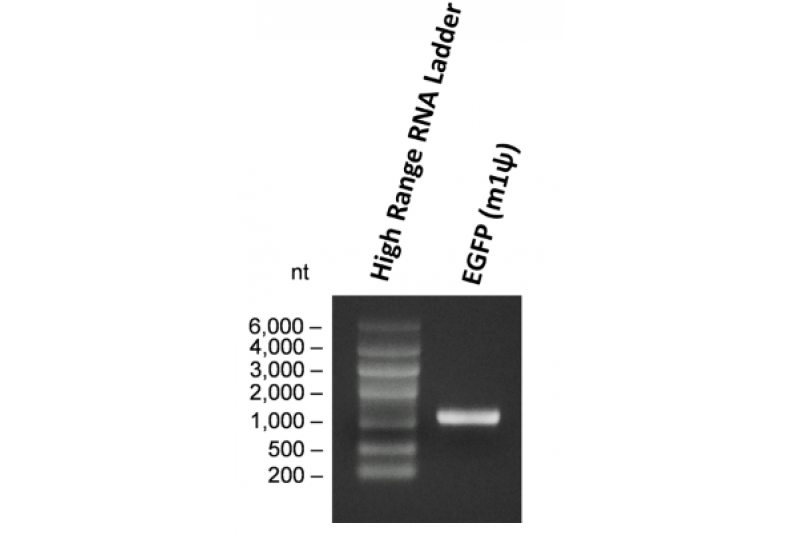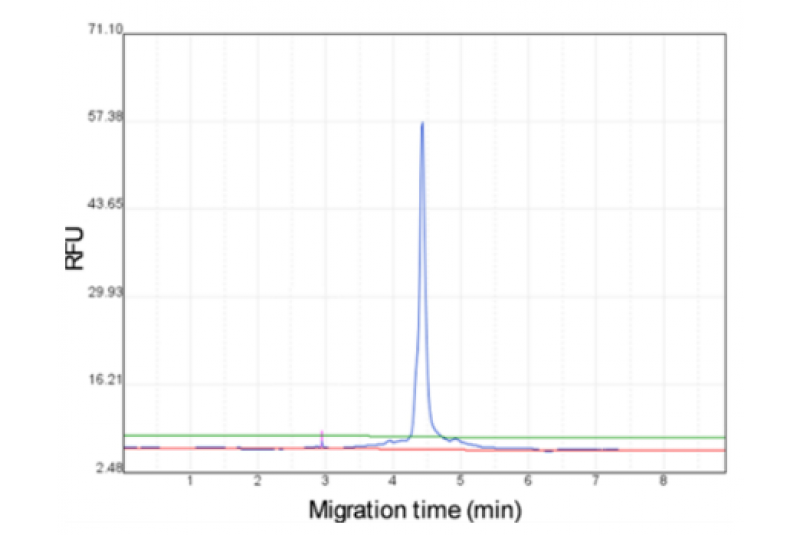EGFP mRNA (m1ψ substitution)
The enhanced form of the green fluorescent protein, which was initially obtained from the jellyfish Aequorea Victoria, will be expressed by the EGFP mRNA. In mammalian cell culture, EGFP is a frequently employed direct detection reporter that produces brilliant green fluorescence with an emission peak at 509 nm.
Croyez’s EGFP mRNAs was generated through in vitro transcription, and these mRNAs are then fortified at their 5' end by modified nucleotide capping, known as Cap1. To mimic the characteristics of fully processed mature mRNAs, we incorporate a poly(A) tail at the 3' end and optimize the mRNAs to enhance stability and overall performance. This ensures that the mRNAs function similarly to naturally occurring mature mRNAs in cells.
EGFP mRNA (m1ψ substitution) incorporates N1-methyl-pseudouridine (N1-mψ) modification to minimize innate immune response.
EGFP mRNA (unmodified) remains unaltered without any additional nucleotide modifications.
✔️ Reduce immune response through base modification
✔️ Enables direct gene translation observation
✔️ Well-suited for in vitro experiments
Croyez’s EGFP mRNAs was generated through in vitro transcription, and these mRNAs are then fortified at their 5' end by modified nucleotide capping, known as Cap1. To mimic the characteristics of fully processed mature mRNAs, we incorporate a poly(A) tail at the 3' end and optimize the mRNAs to enhance stability and overall performance. This ensures that the mRNAs function similarly to naturally occurring mature mRNAs in cells.
EGFP mRNA (m1ψ substitution) incorporates N1-methyl-pseudouridine (N1-mψ) modification to minimize innate immune response.
EGFP mRNA (unmodified) remains unaltered without any additional nucleotide modifications.
✔️ Reduce immune response through base modification
✔️ Enables direct gene translation observation
✔️ Well-suited for in vitro experiments
mRNA length:
1209 nt
Base Composition:
N1-Me-pUTP (N1-mψ)
Concentration:
1.0 mg/ mL
Cap Modification:
Cap 1 structure
Poly A tail:
Yes
Form:
Liquid
Buffer:
1 mM sodium citrate buffer, pH 6.4.
Storage:
Products can be stored at -80°C or below.
We recommend to aliquot the mRNA solution for a better storage. Avoid repeated freeze/thaw cycles.
Shipping:
The products are shipped on dry ice and should be avoided for freeze-thaw cycles.
Application:
Reporter Genes
Shipping Conditions:
Dry ice
1209 nt
Base Composition:
N1-Me-pUTP (N1-mψ)
Concentration:
1.0 mg/ mL
Cap Modification:
Cap 1 structure
Poly A tail:
Yes
Form:
Liquid
Buffer:
1 mM sodium citrate buffer, pH 6.4.
Storage:
Products can be stored at -80°C or below.
We recommend to aliquot the mRNA solution for a better storage. Avoid repeated freeze/thaw cycles.
Shipping:
The products are shipped on dry ice and should be avoided for freeze-thaw cycles.
Application:
Reporter Genes
Shipping Conditions:
Dry ice
Downloads
→ Essential mRNA FAQs Handbook
.png)
Figure 1: 293T cells (0.4 × 10⁵ cells per well, 24-well plate) were transfected with 1 µg of EGFP mRNA (m1 ψ substitution) using the EndoSafe mRNA Transfection Kit (C15053-K01).
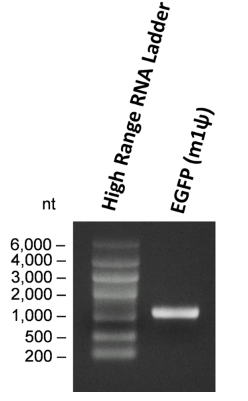
Figure 2: EGFP mRNA (m1 ψ substitution) was analyzed on a 1% TAE agarose gel at 100 V for 30 minutes.
Marker: Croyez High Range RNA ladder (cat no: CR0005)
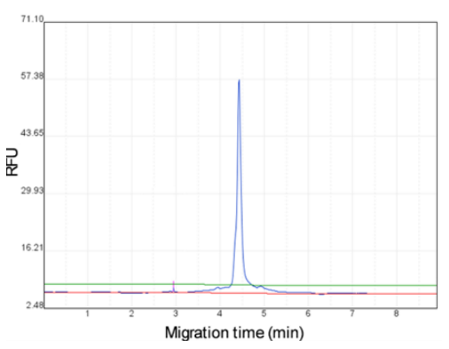
Figure 3:Capillary Electrophoresis
EGFP m1ψ mRNA was analyzed by capillary electrophoresis.

